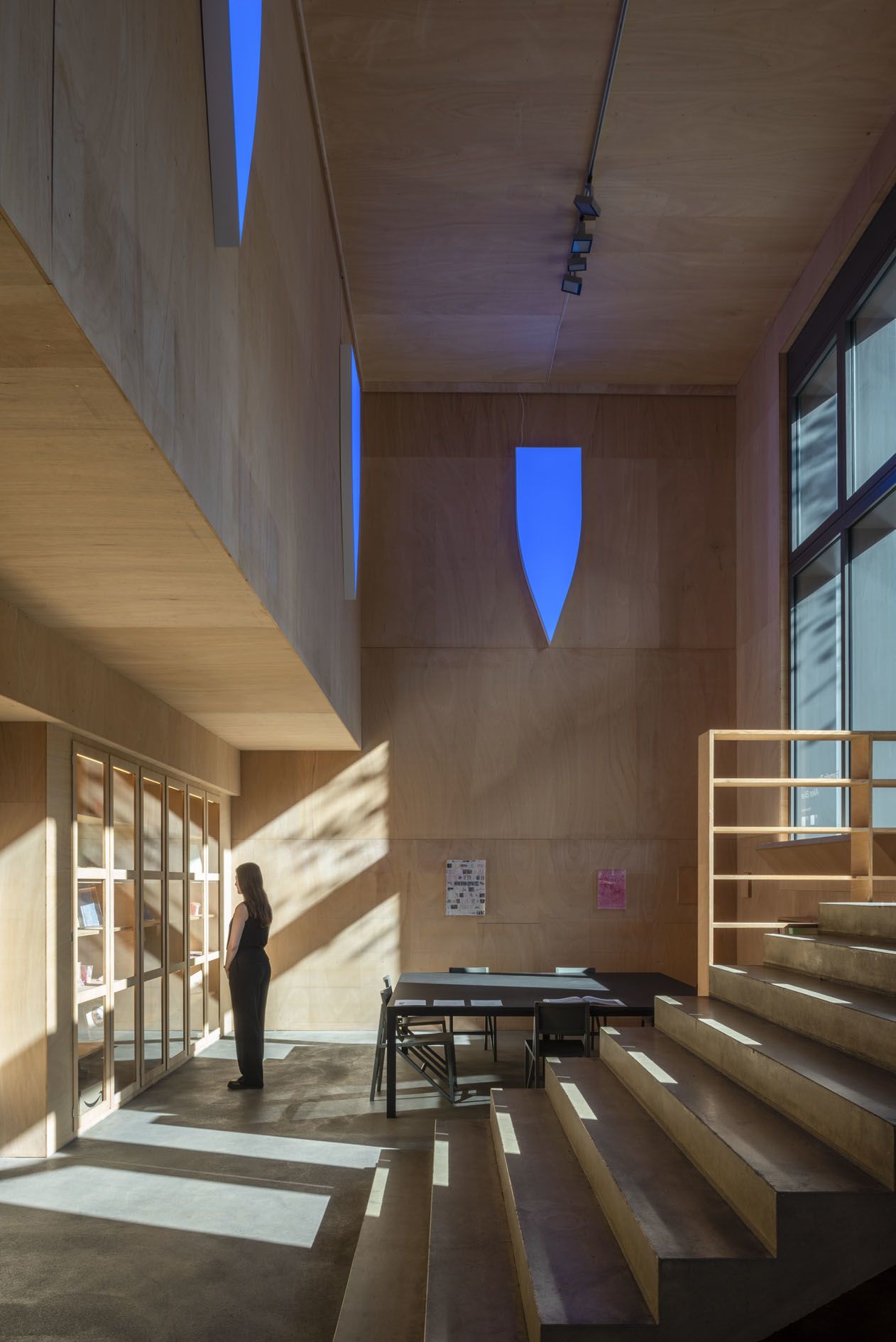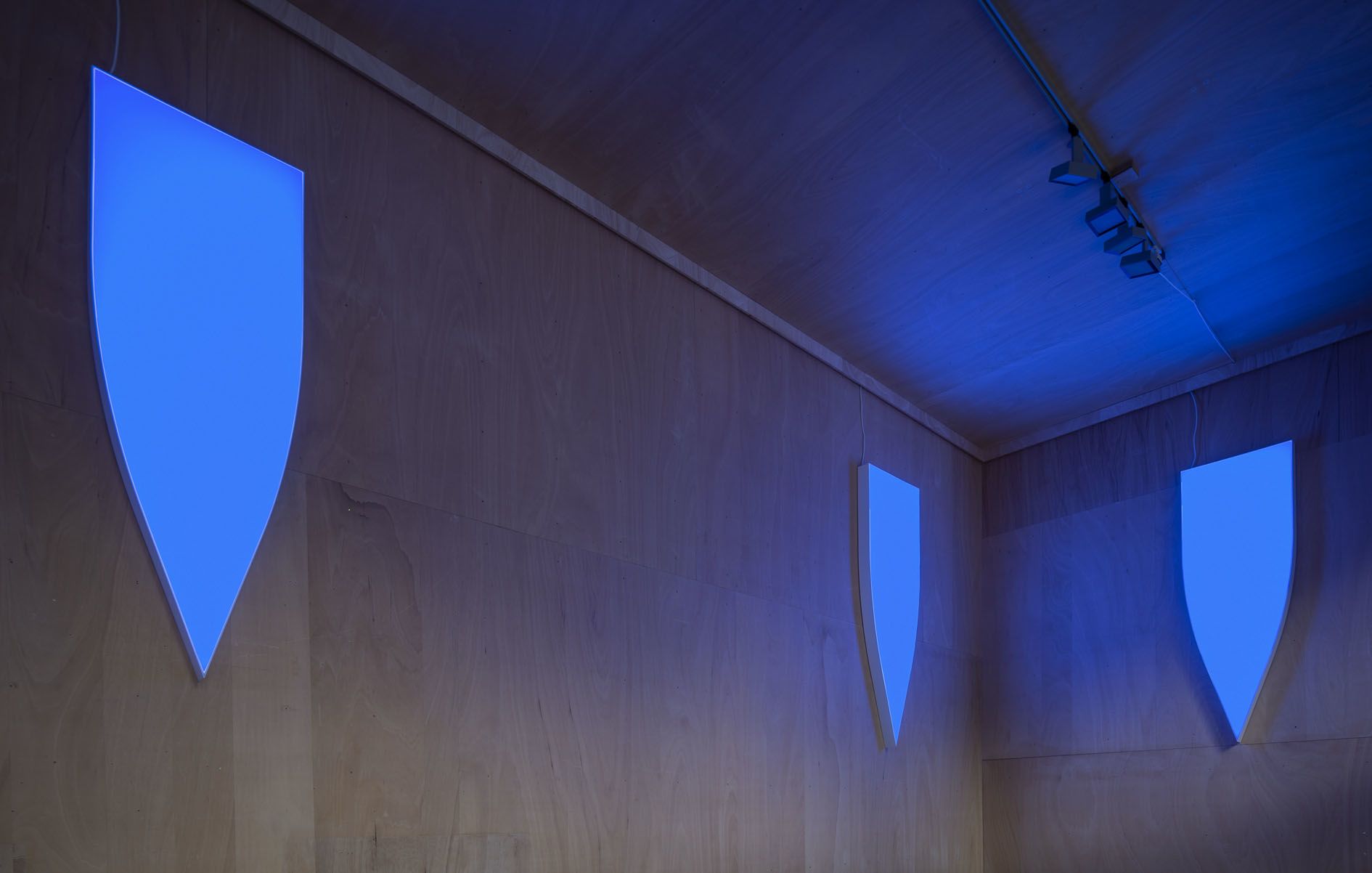An alluring and extramundane blue light emanates from the Window, Sprüth Magers’ Berlin storefront exhibition space that is sunken and high-ceilinged, allowing visitors to view displayed works from the street around the clock. The spectacular color or, to be precise, the wavelengths emitted by Pamela Rosenkranz’s Alien Blue Windows permeate the entire room and pour out of the building.
Four large and one smaller luminous work line the wood-paneled wall. From a distance, they seem to sink into the gallery’s architecture, while at close range, it becomes apparent they protrude into the space. Reminiscent of upside-down lancet windows found in Gothic churches, the shapes always correspond to an actual window in a building – modern or historical – somewhere in the world. The light works possess an unusual density of luminance, infusing the room and its exterior with an alien atmosphere.










